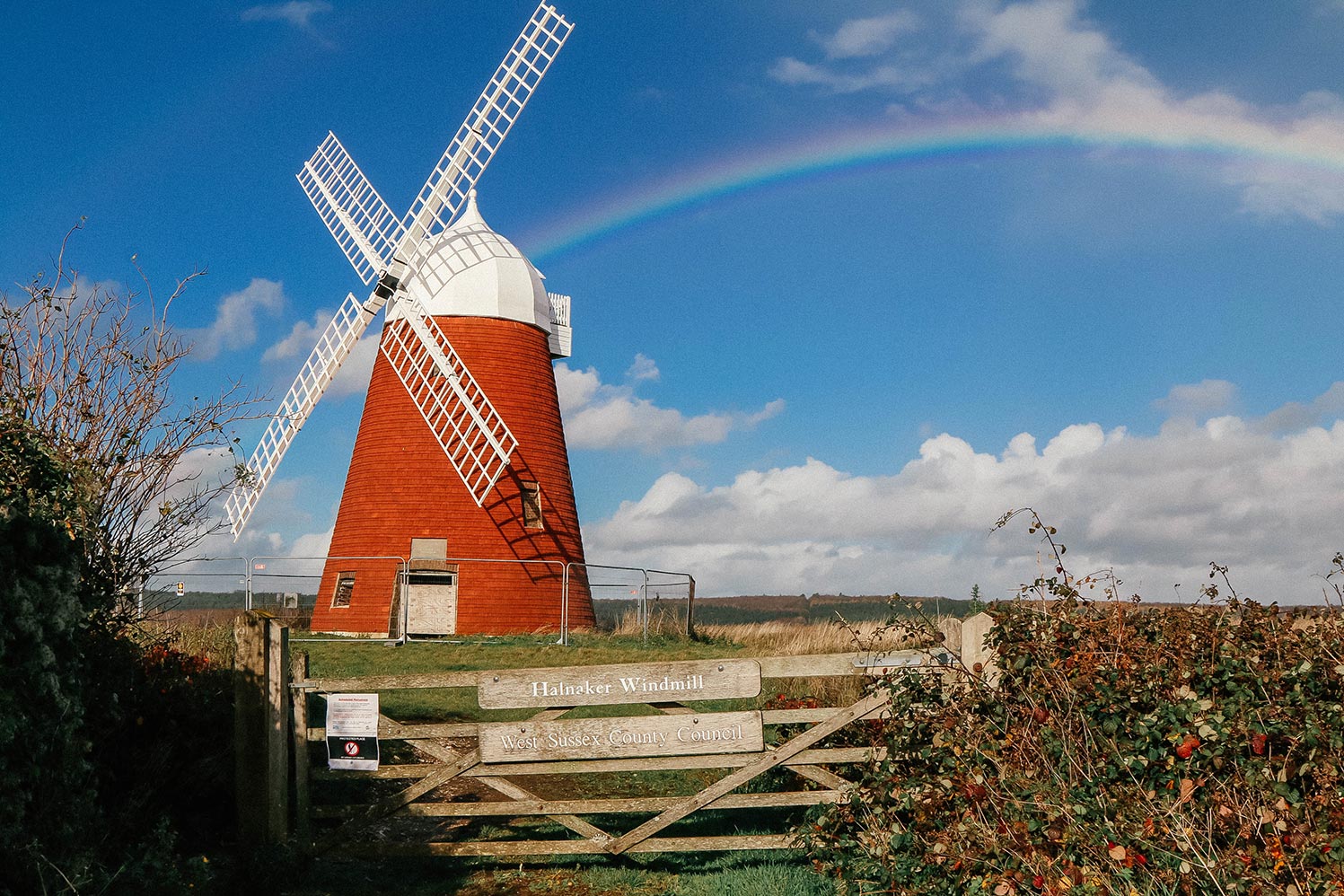Halnaker Windmill is a spot that’s very much a local’s spot. Every day you’ll find dog walkers, Sunday strollers and avid photographers all venturing out to walk through the famous tree tunnel, and up to enjoy Halnaker Windmill and the panoramic views across Chichester which surround it.
Although, in Autumn and winter it’s definitely advisable to pop on a layer or five before doing so. Because when you get to the top of Halnaker Windmill, the open space and lack of wind protection means it gets a tad chilly.
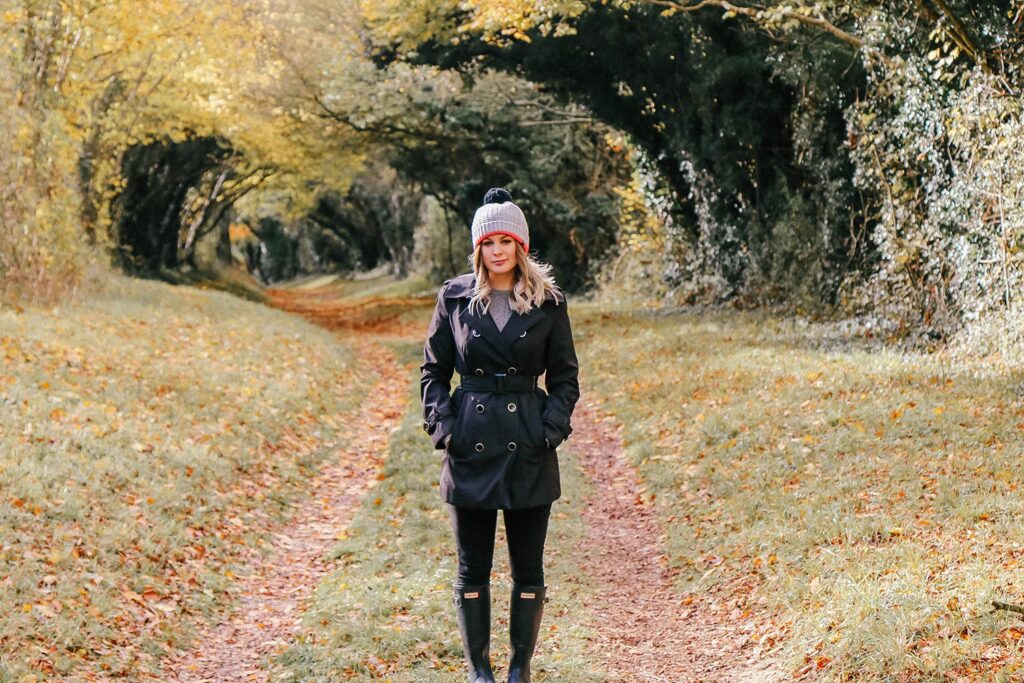
Halnaker Windmill was built many moons ago, with the location where it stands (a top Halnaker Hill) being a Neolithic earthwork structure known as a causewayed enclosure. The scheduling for this includes a WW2 radio direction-finding structure, but in 1540 the very first Mill was built for the Duke of Richmond and the Goodwood Estate. But this isn’t the mill that stands today.
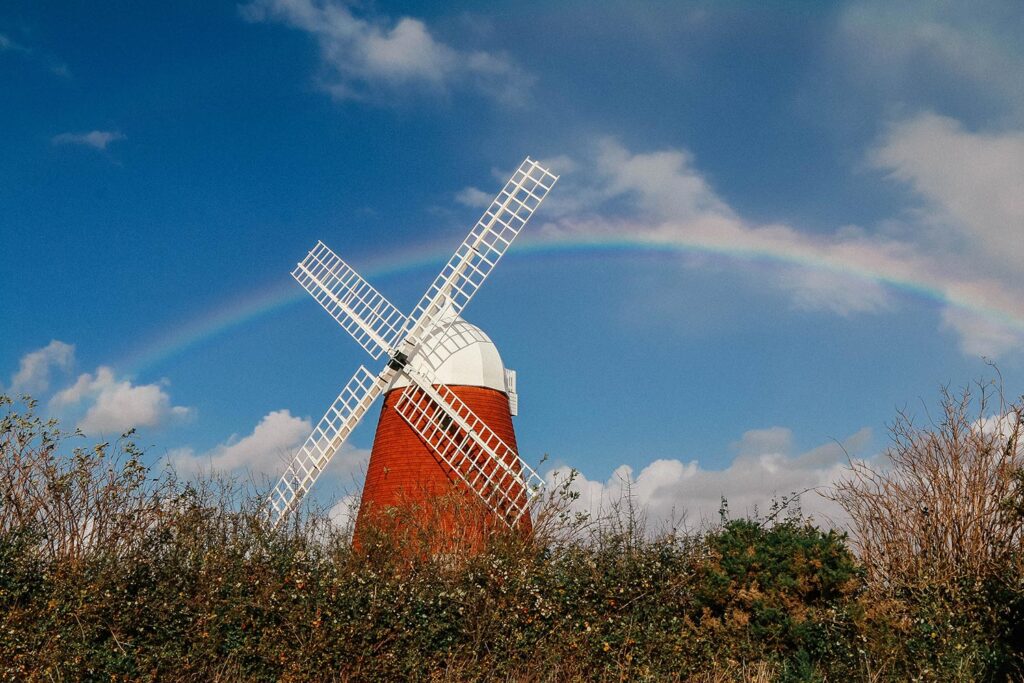
The Halnaker Windmill that you see today (or in these pictures if you’ve never travelled there physically!) was built in 1740, where it was a working mill until it was damaged by lightning in 1905.
Since then Halnaker Windmill has seen many restorations with the Grade 2 listed building receiving extensive repair work in 2017, which included repairs to the cap and balcony, and the replacement of the tile-hung facade. During this time the sails were removed – because yano, health and safety – until June 2018 where the 15ft sails were replaced and hoisted back to their rightful position.

The next stage of planning is to install a door and metal fencing around the building, but until then the site is surrounded by Heras fencing—which is most definitely for safety reasons and not for the aesthetics! But the ugly (but safety-keeping) barrier doesn’t stop me from visiting. Because Halnaker Windmill is one of the best spots to view Chichester from. I mean, just look at it!
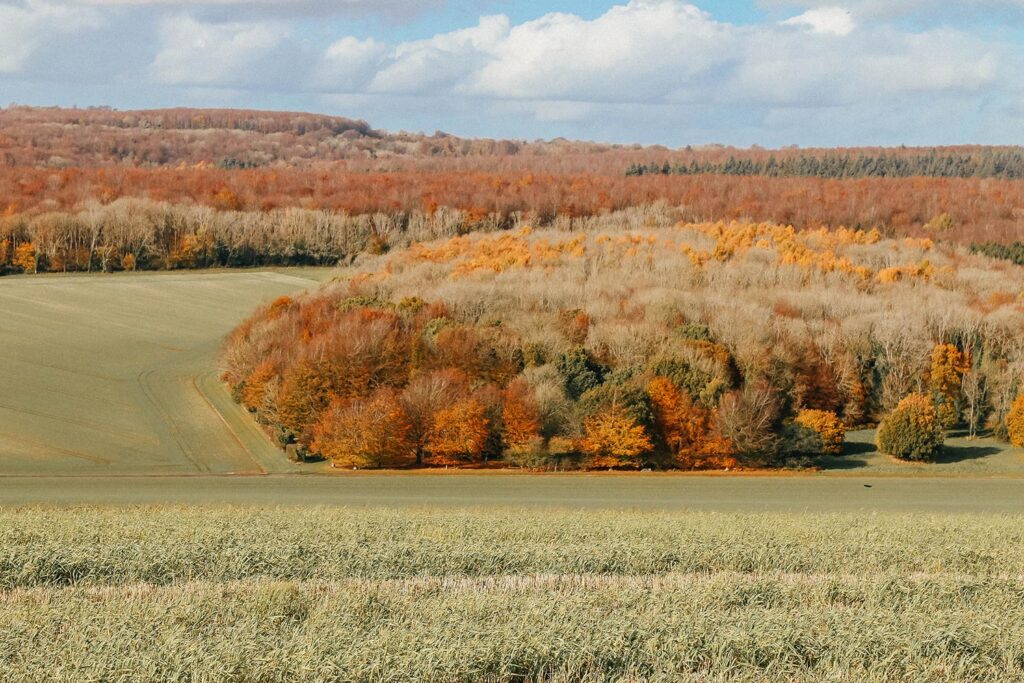
Patchwork colours of greens and browns, spreading for as far as the eye can see.
Plus, the only way to get to the top is via foot. Which means there’s no noise pollution from passing vehicles!

So one Sunday afternoon when the sun was out, I set off with my camera and wellies for a stroll.
How To Get To Halnaker Windmill
Halnaker Windmill is reached by a public footpath at the north end of Halnaker which leads into the remains of Stane Street—an old Roman road which used to connect Chichester (known back then as Noviomagus Reginorum) to London. But to get to Halnaker Windmill, you first need to get to Halnaker!
How To Get To Halnaker Windmill By Car
Head along the A285 until you get to Warehead Farm, there’s a small layby outside of the entrance where you can park.
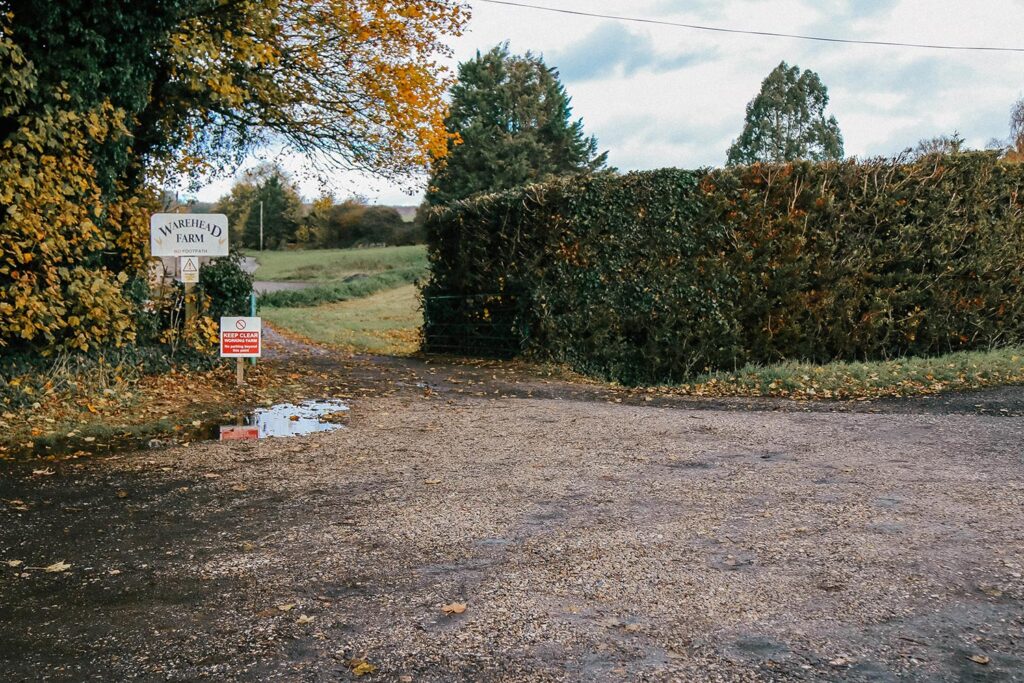
How To Get To Halnaker Via Bus or Train
From Chichester Railway Station head to Chichester Bus Station (directly opposite the side next to The Foundry pub) and get on the Number 55 bus. This will take you through Halnaker and you’ll need to get off at the Halnaker Crossroads stop near the Anglesey Arms pub. From there you can walk to Halnaker Windmill.
Once you’re outside Warehead Farm, follow Mill Lane until you see Mill Cottage.
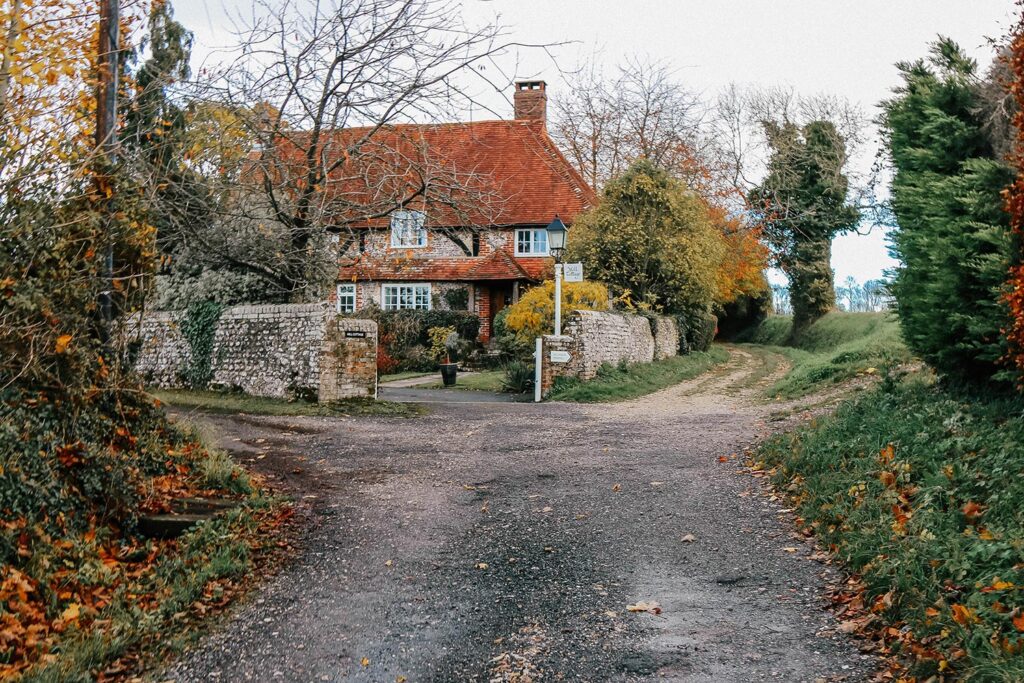
Once you’e done admiring the quintessentially English architecture, you’ll notice a public footpath to the right. This is where you want to head.

As you walk along the footpath you’ll notice how absolutely surrounded by nature you are—especially as you walk through the Halnaker tunnel of trees.
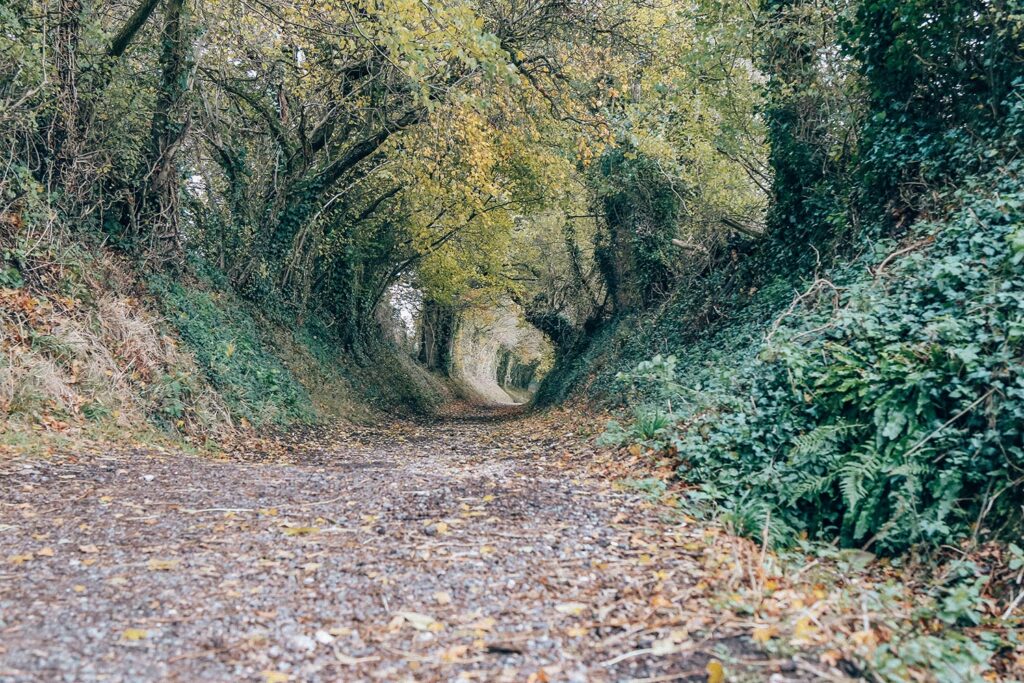
This picture (well, a picture similar to it – this one’s mine and not as popular haha) has circulated on almost every repost account on Instagram gushing about how beautiful it is. But not many people know where it is. It’s easy to see why it’s so loved though, centuries of footfall has worn the path down and created this hollow tunnel effect.
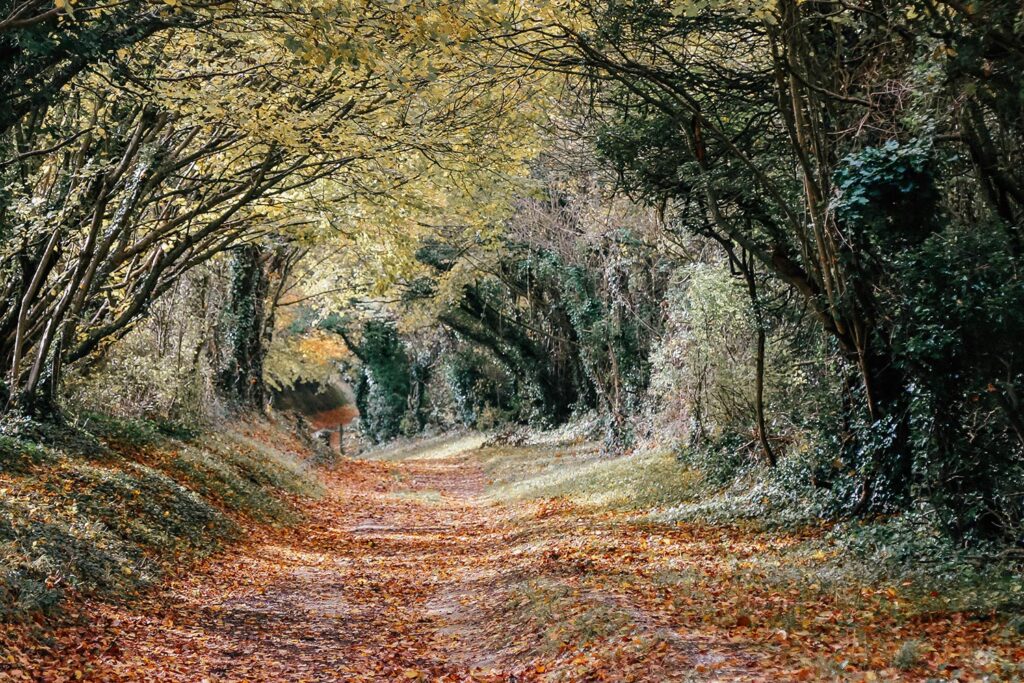
Follow the trodden path and eventually you’ll come across a style to climb over. Another short walk and style later—you’ll notice that the path veers off to the left, to a gate which opens into a field. Follow this and in a few steps, you’ll see Halnaker Windmill poking out from the bushes.

Then follow the path to the mill. At the top of the hill you’ll see wildflower-rich grassland which can often be wild and unkempt, but are also home to an array of butterflies, insects and farmland birds.
